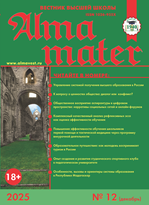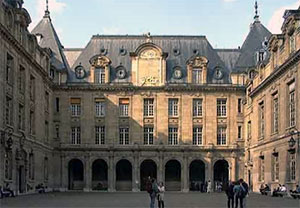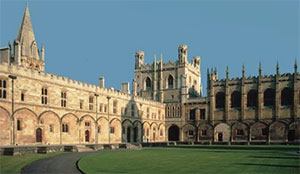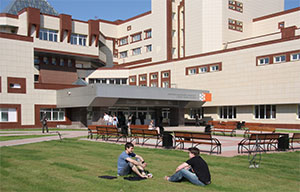https://doi.org/10.20339/AM.01-19.005
S.V. Rogatykh is Cand.Sci. (Biology), senior researcher at Scientific Research Geo-technological Center of DVO RAS e-mail: rogatykhsv@yandex.ru, and E.A. Devyatova is Cand.Sci. (Biology), head of sub-faculty at Vitus Bering Kamchatka State University e-mail: devyatovaea@mail.ru
Analyzed are issues, concerning cooperation of university and scientific research institution in the sphere, determining the base of student’s practice. The aim of the article is to determine links and the role of collection of micro-organisms in scientific research institute with passage of production and pre-graduation practice of university students. Allocation of these motives facilitates organization of production practice in scientific research and production laboratories of academic and applied science, requiring deep specialized training as to participation in that activity. Passage of corresponding production and pre-diploma practice by students of Kamchatka higher school allowed to strengthen results of student’s training and to create new level of his knowledge, skills and characteristics, as well as to determine formation of his personality as specialist.
Key words: collection of micro-organisms, bio-diversity, bio-technology, Kamchatka, industrial practice, scientific research institution.
References
1. Integrated program for the development of biotechnology in the Russian Federation for the period up to 2020.
2. Haynasova, T.S., Kungurova, V.E., Levenets, O.O. Isolation of aboriginal chemolithotrophic microorganisms from ores of deposits and ore occurrences of the Kamchatka nickel-bearing province. Mountain information analytical bulletin. 2016. No. 31. P. 176–185.
3. Investigation of bacterial and chemical processes and creation of bases for geobiotechnology processing of sulfide copper-nickel ores and concentrates with obtaining final products. Petropavlovsk-Kamchatsky, 2017.
4. Evtushenko, L.I., Golubev, V.I., Ozerskaya, S.M. and others. All-Russian collection of microorganisms: the path to the biological resource center. History of science and technology. 2015. No. 5. P. 19–36.
5. Collection of cultures of beneficial microorganisms. URL: http://arriam.ru/kollekciya-kul-tur1/
6. All-Russian collection of industrial microorganisms. URL: http://www.genetika.ru/vkpm/
7. Bioresource center, Siberian branch of the Russian Academy of Sciences. URL: http://www.sifibr.irk.ru/collection.html
8. Vakhrameeva, G.M., Pavlov, V.M., Mokrievich, A.N., Dyatlov, I.A. Creation of collection of avirulent stable strains of tularemia microbe for use in the system of training specialists for working with PBA I-II pathogenicity groups. Bacteriology. 2017. No. 3. P. 53.
9. Collection of microorganisms of the department of agricultural microbiology of FGBUN “NIISK of Crimea”. URL: https://niishk.ru/innovacionnye-razrabotki/kollekciya-mikroorganizmov/
10. The Center for the collection of microorganisms (UNIQEM). URL: http://www.fbras.ru/services/ckp/tskp-kollektsiya-uniqem
11. Kazantsev, M.F. Legal regulation in the field of biological collections: a system, state, development. Scientific yearbook of the Institute of Philosophy and Law of the Ural Branch of RAS. 2018. Vol. 18. Iss. 1. P. 94–143.
12. Bogdanov, N.A. Means of newest information technologies (SNIT) as a tool for teaching biology. In: Actual issues of biology, chemistry and ecology: science and education. Moscow, 2004. Р. 21–24.











.png)






